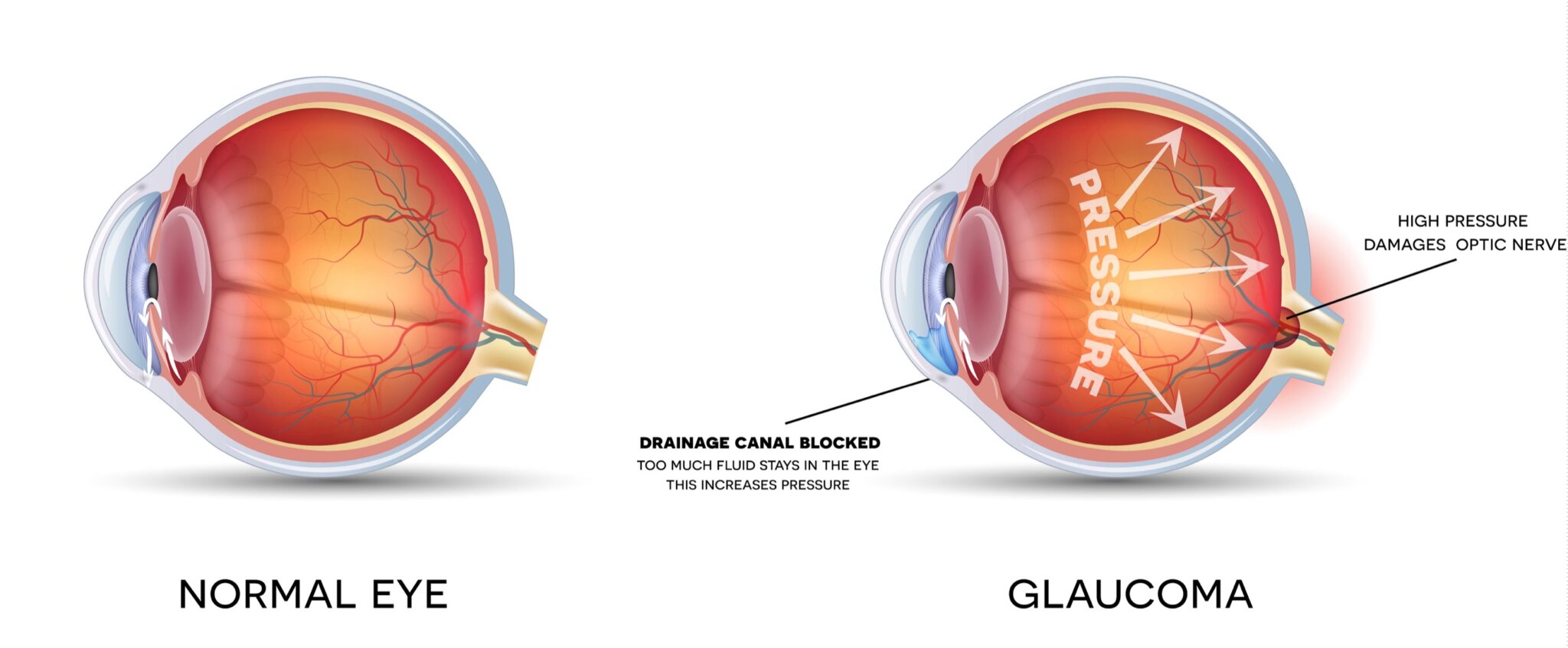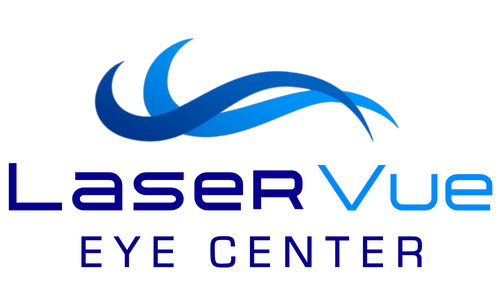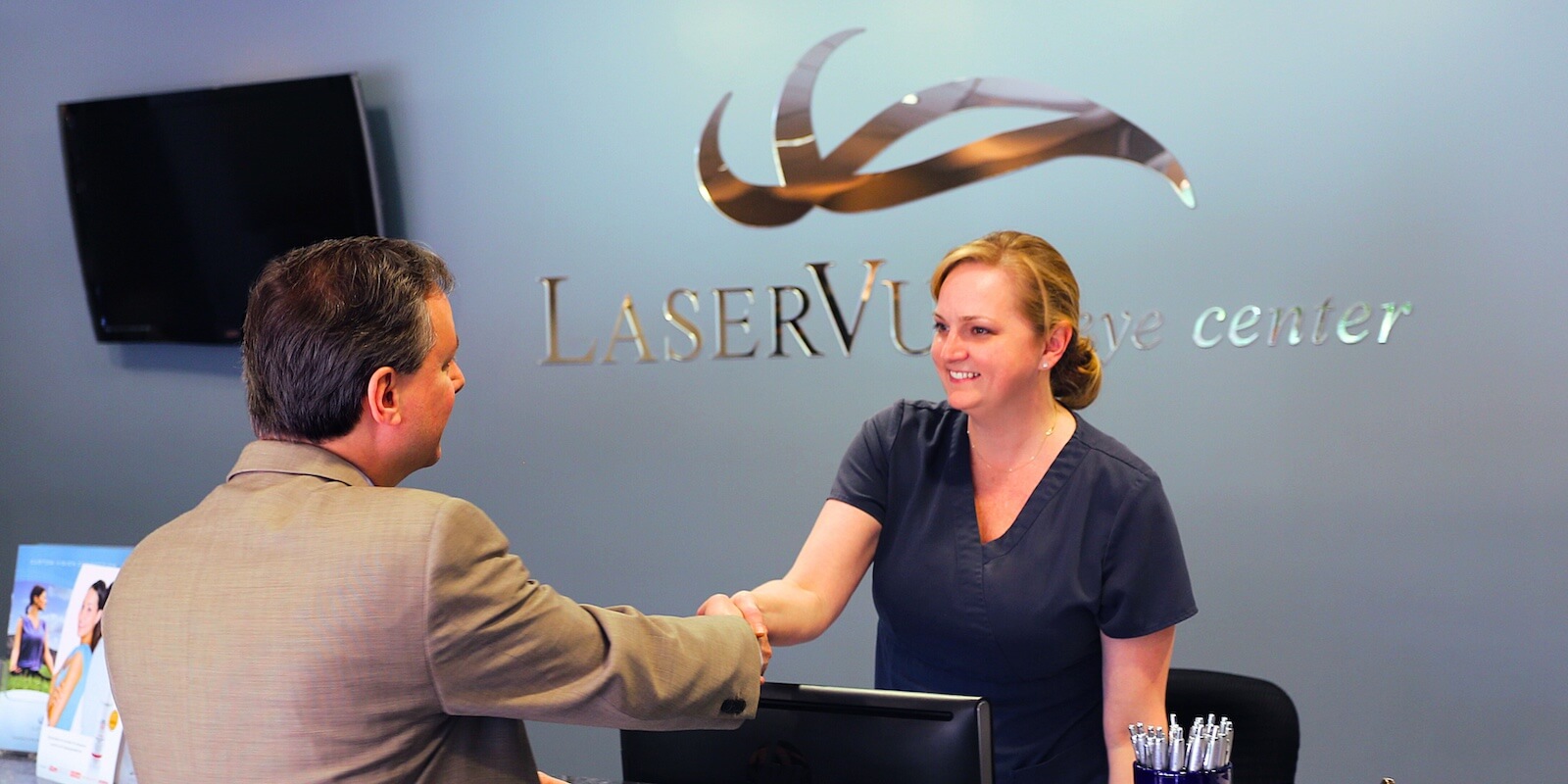Glaucoma
Majority of people with glaucoma have no early symptoms or pain from this increased pressure, it is important to see your eye doctor regularly so that glaucoma can be diagnosed and treated long before permanent visual loss occurs. Glaucoma is the second leading cause of blindness in the U.S. Glaucoma most often occurs in adults over age 40, but it can also occur in young adults, children, and even infants. In African-Americans, glaucoma occurs more frequently and at an earlier age and with greater loss of vision. Glaucoma gradually reduces your peripheral vision, and by the time it’s noticed, permanent damage has already occurred. Eventually, tunnel vision develops and only straight-ahead vision may be possible.

People at high risk for glaucoma due to high intraocular pressures, family history, age or optic nerve appearance may need more frequent visits. Glaucoma exams and glaucoma treatment are available at LaserVue Eye Center in San Francisco and Santa Rosa.
An acute glaucoma attack produces sudden symptoms such as eye pain, headaches, halos around lights, mid-dilated pupils, vision loss, red eyes, nausea, and vomiting. These signs may last for a few hours, then return again for another round. Each attack takes part of your field of vision. Other signs include headaches, blurred vision, difficulty adapting to darkness, or haloes around lights.
What is Glaucoma?
Glaucoma is a disease of the optic nerve, which is the part of the eye that carries the images we see from the eye to the brain. The optic nerve is made up of many nerve fibers. Glaucoma damages nerve fibers, which can cause blind spots in our vision and vision loss to develop.
Even people with normal intraocular pressure can experience vision loss from glaucoma. This condition is called normal tension glaucoma. In this type of glaucoma, the optic nerve is damaged even though the intraocular pressure is considered normal. Normal tension glaucoma is not well understood, but we do know that lowering optic nerve damage has been shown to slow progression of this form of glaucoma also. This type is seen more commonly in people of Asian descent.
Primary open-angle glaucoma has few symptoms in the early stages. Blindness can result if it is left untreated.
People at risk for glaucoma may have one or more risk factors, including elevated intraocular pressure, a family history of glaucoma, a particular ethnic background, advanced age, or certain optic nerve conditions.
What are the Symptoms of Glaucoma?
Unfortunately, many people with glaucoma are unaware they have it, as there are typically no early warning signs. Glaucoma is associated with “Silent Loss of Vision” as sight is preserved until late in the disease when irreversible and permanent damage has already occurred.
As with many diseases, early detection and treatment, as well as a proper treatment regimen with follow-up, are critically important to lower eye pressure and minimize long-term harm.

What Causes Glaucoma?
The exact cause of glaucoma is not fully understood, but some factors have been found to contribute to the development of the disease, including:
Age
Your risk of getting glaucoma increases as you age, especially beyond 60.
Ethnicity
Asians are more likely to suffer from angle-closure glaucoma than other ethnic groups. African Americans over 40 and Hispanics over 60 are also at increased risk for open-angle glaucoma.
Increased intraocular fluid pressure
Although this is an important risk factor, only half of all Americans with glaucoma will show increased intraocular pressure when measured randomly because eye pressure constantly fluctuates.
It’s important to screen for glaucoma with an ophthalmologist by taking intraocular pressure measurements over time to look for trends of elevated pressure.
Family history of glaucoma
Heredity has been established as a cause of glaucoma.
What Are the Treatments for Glaucoma?
While there is no cure for glaucoma, its progression can be slowed down through various means. Treatment options are influenced by how advanced the disease is and if the patient is an appropriate candidate for a given treatment. Most treatments aim to prevent further damage to the optic nerve by lowering the pressure in the eyes.
Treatment options fall into one of 3 categories:
Glaucoma medications

The most common treatment for glaucoma is prescription eye drops (pills are also used but only as a temporary measure before surgery). The goal of these medications is to decrease intraocular pressure by either promoting drainage of excess eye fluid or reducing eye fluid production.
For those patients who have difficulty taking daily medicated eye drops for glaucoma, the Durysta dissolvable implant may be a great option. During a brief, in-office procedure, our doctor will insert the implant that will slowly and continuously release medication to help lower eye pressure. Durysta’s sustained and targeted drug delivery, which can last for months, eliminates the need for daily eye drops.
Laser eye surgery for glaucoma
At LaserVue Eye Center, we utilize a variety of laser procedures to treat both open and closed-angle glaucoma, tailoring our approach to each patient’s particular need.
Laser surgeries for glaucoma include Endocyclophotocoagulation (ECP), Selective Laser Trabeculoplasty (SLT), Laser Peripheral Iridotomy (LPI), and Transscleral and Micropulse Cyclophotocoagulation.
Minimally Invasive Glaucoma Surgery (MIGS)
In certain circumstances, patients with early to moderate glaucoma benefit from surgery, where the doctor makes an incision and works on the inner structures of your eye.
The doctors at LaserVue Eye Center are proud to offer the diagnoses and treatment of Glaucoma at our three locations in the San Francisco Bay area. Please call 1-800-527-3745 to schedule your appointment today.

